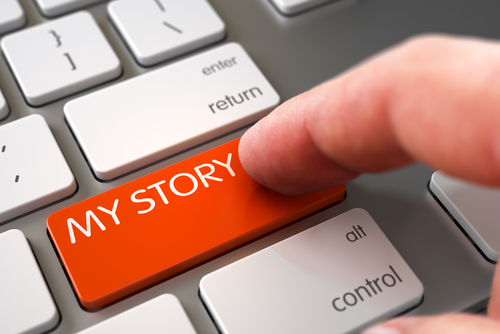Scleroderma Diagnosis: What Can I Expect?

The month of September always prompts a trip down the memory lane — or, for me, the abyss that is September 1997. It was at that time, age 24, when I was diagnosed with Scleroderma — resulting in my life being turned upside down, forcing me to abandon most of my dreams, and to be grateful for defying the medical statistics and long-term outlook for most scleroderma patients.
During the summer of 1997, I had started to feel very tired all of the time. This was quite out of character for me, as I had an insatiable zest for life. Not only was I working as a medical representative for Bristol-Myers Squibb, I was studying on a part-time, distance-learning basis for a postgraduate diploma in law, which would then lead me to pursue my childhood personal desire to be a barrister and professional advocate.
By early September, my hands had become swollen and puffy with shiny tight skin across my fingers. I had difficulty moving my fingers as they were stiff, and I was having difficulty in gripping and in making a fist. I also found it difficult to open my mouth wide and to swallow. I wrote more about my initial symptoms in this previous post.
As the 1997 summer season started to change into autumn, not only did I feel exhausted, I also noticed that I was starting to actually feel the cold. This was a totally new experience for me, as even in winter I would seldom be wearing thermal clothing. I thought that the ‘thermal vest’ was something to look forward to, for when you reached late middle age!
It was during Autumn 1997 that my internal thermometer tripped out, and it still remains very demanding. It took a few more months before the color changes would become visible in my fingers, presenting classic Raynaud’s symptoms and causing me to have to wear several layers even in the summer, which are then “bulked up” in the winter.
Having observed the change in my hands, combined with the tiredness and swallowing difficulties, I booked an appointment to see my GP, my medical doctor. At first consultation, the stiff puffy fingers were thought to be a form of arthritis; however, the blood test for arthritis returned a negative result. This was a huge relief at the time, although I knew that something was not right. I was then required to give another blood test that was used for a specific autoantibody test, and bingo! — this test returned a positive RNA Polymerase result, confirming a diffuse systemic sclerosis diagnosis.
The EULAR/ACR classification code is the current criteria used for confirming a scleroderma diagnosis.
I was referred to my local hospital’s consultant doctor in rheumatology, who advised me that I was looking at a 15-month prognosis, and to give up on my idea of being a barrister. I felt as though my whole world had ended and that the rug had been pulled out from under my feet. There was no way that I was giving up on my law studies, I had already paid a fortune in tuition fees, after all!
After the blood tests, I was required to take many different diagnostic tests to assess the level of internal damage, if any.
I wrote about these here.
By the February 1998, my scleroderma disease was so aggressive with skin involvement that I was unable to stretch my arms or legs, and my skin was itchy, swollen, and painful. I returned to the hospital and commenced all of the different immunosuppressants and disease-modifying agents available, with little disease improvement, but horrendous side effects and continual nausea.
In December 1998, I went to see Dame Prof. Black at The Royal Free Hospital in London. Within 30 seconds of being in the consultation appointment, I knew that Dame Prof. Black would do everything she could to help me, especially with me achieving my dream of being a barrister.
Fifteen months of intense chemo drips (cyclophosphamide) combined with mycophenolate mofetil stabilized my symptoms, stopping the scleroderma in its tracks, thankfully. Otherwise, I was scheduled to be having a stem cell transplant, as my name was on the waiting list.
By now, Prof. Chris Denton had returned from his scleroderma studies in the U.S., and I had the pleasure of becoming his patient. My local consultant doctor (the diagnosing doctor) would not entertain “shared care.”
At the end of 2004, I returned to my family home town of Southport, and I am delighted that my local consultant doctor here, Dr. Hannah Sykes, is extremely supportive and co-operative with me, having shared care with the expertise of the scleroderma unit at The Royal Free Hospital and Prof. Denton’s medical expertise. This co-operation from the medics most certainly makes for an improved patient experience, especially given that medical appointments and tests, and the like, become the long-term scleroderma patient’s full-time job due to the multidisciplinary care required.
I wrote about the importance of expert specialist centers here.
I wrote about the long-term scleroderma patient’s annual check up here.
And I wrote about the Olympian effort and attitude needed to become a Scleroderma Olympian here.
I also included the U.K. guidelines for the treatment and management of scleroderma.
I know that I am a very lucky scleroderma patient by way of minimal internal organ damage, even though I have had my life and body hijacked by scleroderma. This has made me be dedicated to using the remainder of my life to improve the scleroderma, Raynaud’s, and rare disease patient experience.
I take huge inspiration from the scleroderma global trail blazer and pioneer, Prof. Christopher Denton, who I am eternally grateful to, for his medical expertise and for helping me realize my dream of qualifying as a self-employed barrister on March 1, 2004.
Although I am no longer physically able to continue with my 60-hour per week role, I have transferred my professional skills to the global scleroderma landscape — being a voice at all levels, including decision-making body levels such as NHS England, the British Society for Rheumatology, RareDiseaseUK, the European Rare Diseases Organisation, and The European Medicines Agency, and — of course — here, with my column at Scleroderma News. I am also delighted to have recently joined the ProVIDE Law team in Liverpool, with my first article focusing on patient best care/practice and clinical litigation. Clearly these roles are secondary to the priority of me attending to and respecting my symptoms, as I want to feel good.
I very much hope to develop this platform further, advancing the scleroderma and rare disease patient plight, thereby improving the 4 main hallmarks of the rare disease patient:
• early diagnosis
• expert specialist centers
• commitment to research investment
• access to innovative medicines
Scleroderma has made me have to tweak my original dreams, however, I feel truly honored to be using my background qualifications and skills to being a scleroderma, Raynaud’s and rare disease patient on the global stage, as well as raising awareness and funds for the Scleroderma Unit at The Royal Free Hospital.
I have a new dream now — a #sclerodermafreeworld … imagine that.
Living the dream, scleroderma style …
Note: Scleroderma News is strictly a news and information website about the disease. It does not provide medical advice, diagnosis, or treatment. This content is not intended to be a substitute for professional medical advice, diagnosis, or treatment. Always seek the advice of your physician or other qualified health provider with any questions you may have regarding a medical condition. Never disregard professional medical advice or delay in seeking it because of something you have read on this website. The opinions expressed in this column are not those of Scleroderma News or its parent company, Bionews Services, and are intended to spark discussion about issues pertaining to multiple sclerosis.







